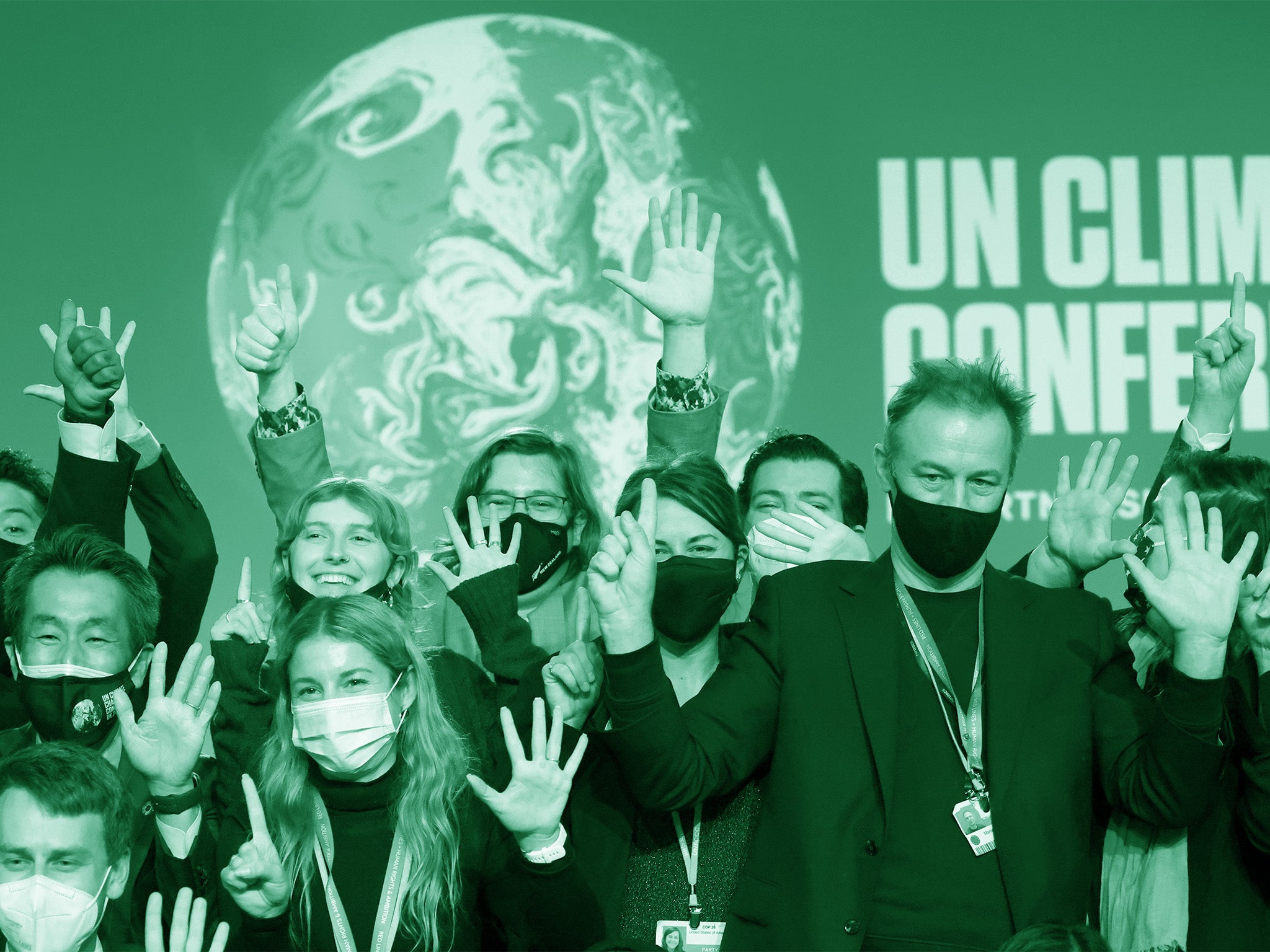I’ve attended COPs since 2015 and I didn’t expect much — but COP26 was different
What’s changed now is that the private sector seems fully on board


Your support helps us to tell the story
From reproductive rights to climate change to Big Tech, The Independent is on the ground when the story is developing. Whether it's investigating the financials of Elon Musk's pro-Trump PAC or producing our latest documentary, 'The A Word', which shines a light on the American women fighting for reproductive rights, we know how important it is to parse out the facts from the messaging.
At such a critical moment in US history, we need reporters on the ground. Your donation allows us to keep sending journalists to speak to both sides of the story.
The Independent is trusted by Americans across the entire political spectrum. And unlike many other quality news outlets, we choose not to lock Americans out of our reporting and analysis with paywalls. We believe quality journalism should be available to everyone, paid for by those who can afford it.
Your support makes all the difference.In the run-up to COP26, I expected very little. I didn’t anticipate much progress beyond the pledges we’d heard – which, even if met, added up to a catastrophic 2.1°C of warming. But over the past two weeks, governments have made some big new commitments – from increased ambition from individual countries to coalition efforts including lowering global methane emissions and a commitment to end deforestation. Together, these commitments, if executed, would limit expected warming to 1.8°C. While this is still insufficient, every tenth of a degree counts, and this, in theory, helps keep the 1.5°C goal in reach.
But what does this mean in practice? There’s an old saying in investing: “Strategy is easy, execution is hard.” The legacy of COP26 depends on whether this moment emerges as the inflection point where governments and private sector actors move from commitments and strategy to all-out execution.
While the government commitments made have attracted a great deal of attention and discussion, the massive new engagement from the private sector – financial institutions, businesses and entrepreneurs – tells the real story, if they follow through. I’ve been attending COPs since 2015 and have never seen the private sector show up with anything like the presence they showed in Glasgow. Not even close. But the world needs the pledges they are making to materialize into concrete execution plans in the short term and not just promises of future action.
The private sector’s involvement in the execution phase remains critical as transformational change relies upon radical collaboration and cooperation across sectors, disciplines and geographies. Governments play an important role in establishing the framework for businesses to operate within, but actually reducing emissions and accelerating decarbonization requires significant private sector action and investment. Fortunately, the planet’s interests line up with the private sector’s. Rebuilding a sustainable world provides a massive investment opportunity.
A sustainable future – one with reduced climate disasters and catastrophes – demands broad systems change. We need to transform our societies, from how we farm to how we move to how we generate electricity. Every sector must adapt and change. Executing these changes in the physical world will challenge our capabilities. Financiers, activists, scientists, policymakers, project developers and builders will have to work together every step of the way. We have never encountered a challenge of this magnitude before, let alone one with such intense time pressure.
We have no time to waste. If we continue to emit at this rate, our carbon budget – the amount of CO2 we can emit without reaching a change of 1.5°C – will expire in just under eight years. We have no choice but to start immediately. Planning, permitting, building, and interconnecting all take time. We can’t wait until 2029 (or 2023) and expect to meet our 2030 goals.
The climate crisis has arrived. And the people, countries and communities who have contributed the least to this crisis have been hit first and will be hit worst. So, as we think about and plan for the future, we must incorporate justice and equity into the foundations of our approach. The countries developing new climate solutions can’t just deploy their tech at home while propping up the fossil fuel industry abroad. The rich countries who grew their economies with fossil fuels now must enable widespread technology transfers all over the world. Justice requires it and, practically, between lower costs and available land, building clean energy infrastructure in the developing world may also present real opportunities. After all, we need a global response.
The success of COP26 depends on what happens now, after the conference has ended and everyone has gone home. If governments do not implement the pledges they spent the last two weeks discussing, if businesses don’t get on it, the activists will have called out the truth – that we heard nothing in Glasgow but “blah, blah, blah.”
I don’t believe that. I remain optimistic — but for us to triumph, governments, financial institutions, MDBs and businesses must embrace an approach of radical collaboration. We can only build a sustainable, equitable world free from the unimaginable human suffering the climate crisis threatens if we do it together and we do it now.
Tom Steyer is an American businessman, hedge fund manager and climate activist who ran for president in 2020
Join our commenting forum
Join thought-provoking conversations, follow other Independent readers and see their replies
Comments